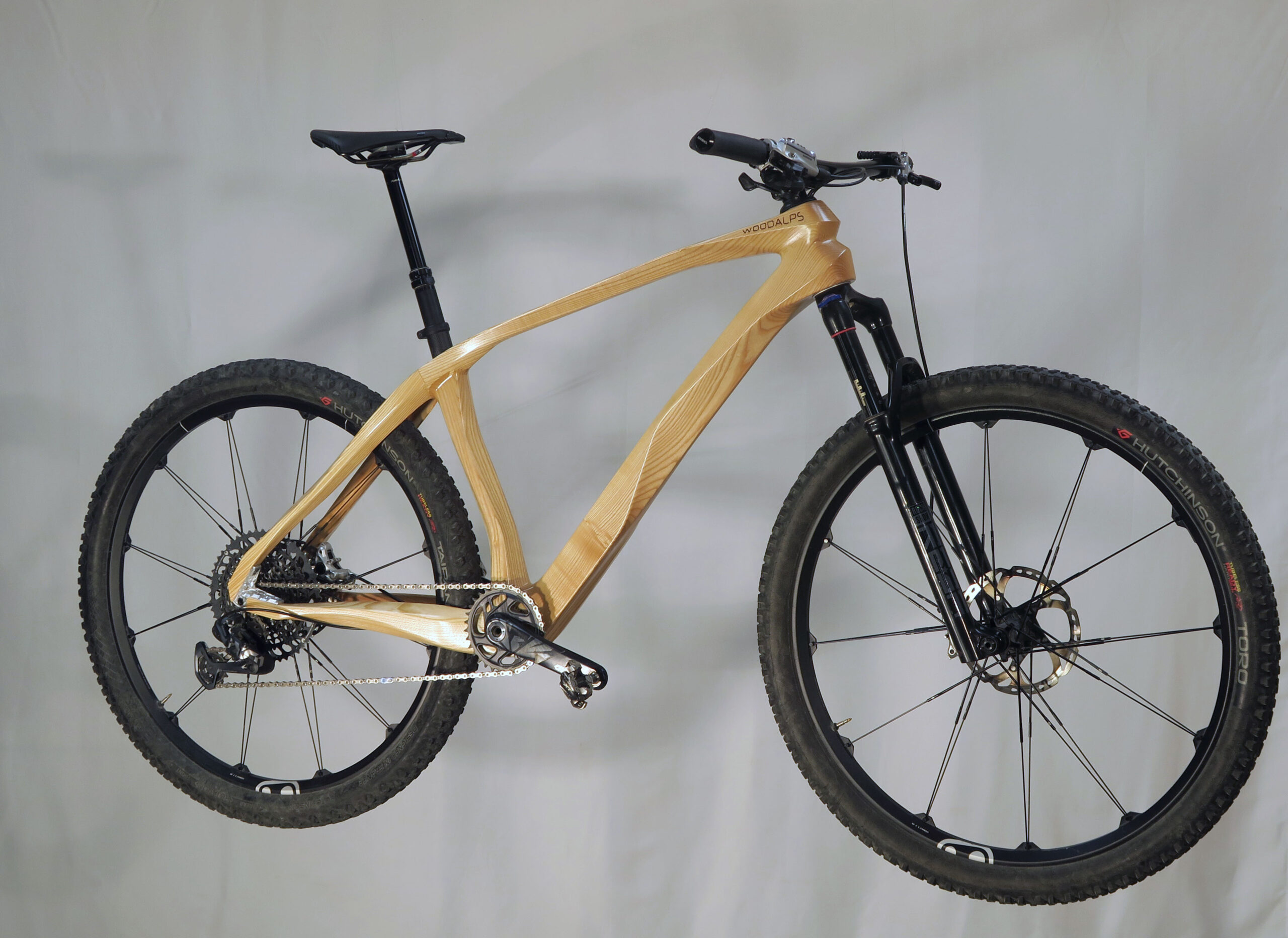For the first time ever, the Bespoked Bike Show is leaving the UK and taking place in Dresden, Germany. From 13th-15th October, people will be able to go and peruse gorgeous hand built bikes and accessories, and chat to their makers. Sadly we couldn’t make the trip this year, so we’re bringing a taste of the show to these pages. Maybe it’ll whet your appetite to head along, or maybe it’ll make you wish you were there enough to get organised for next time.
Wooden bikes aren’t a new concept, but Arnaud who built this WOODALPS YGGY has given quite a lot of information and insight into the build process. Which, if it doesn’t make you want the bike, may make you want to head out to the shed and start whittling!
WOODALPS YGGY
- Builder: Arnaud Pornin
- Brand Name: WOODALPS
- Web: woodalps.com
- Instagram: woodalps_wooden_bikes
- Price: 2750€ for the frame + equipment, so the price of the bike start from 5000€
The YGGY is a hardtail. It is designed for XC / Trail. The performance is similar to other hardtails and it is strong. The frame resistance is tested according to ISO 4210, the same norm than other bikes on the market. The weight is between 11 and 12kg, depending on the size and equipment.
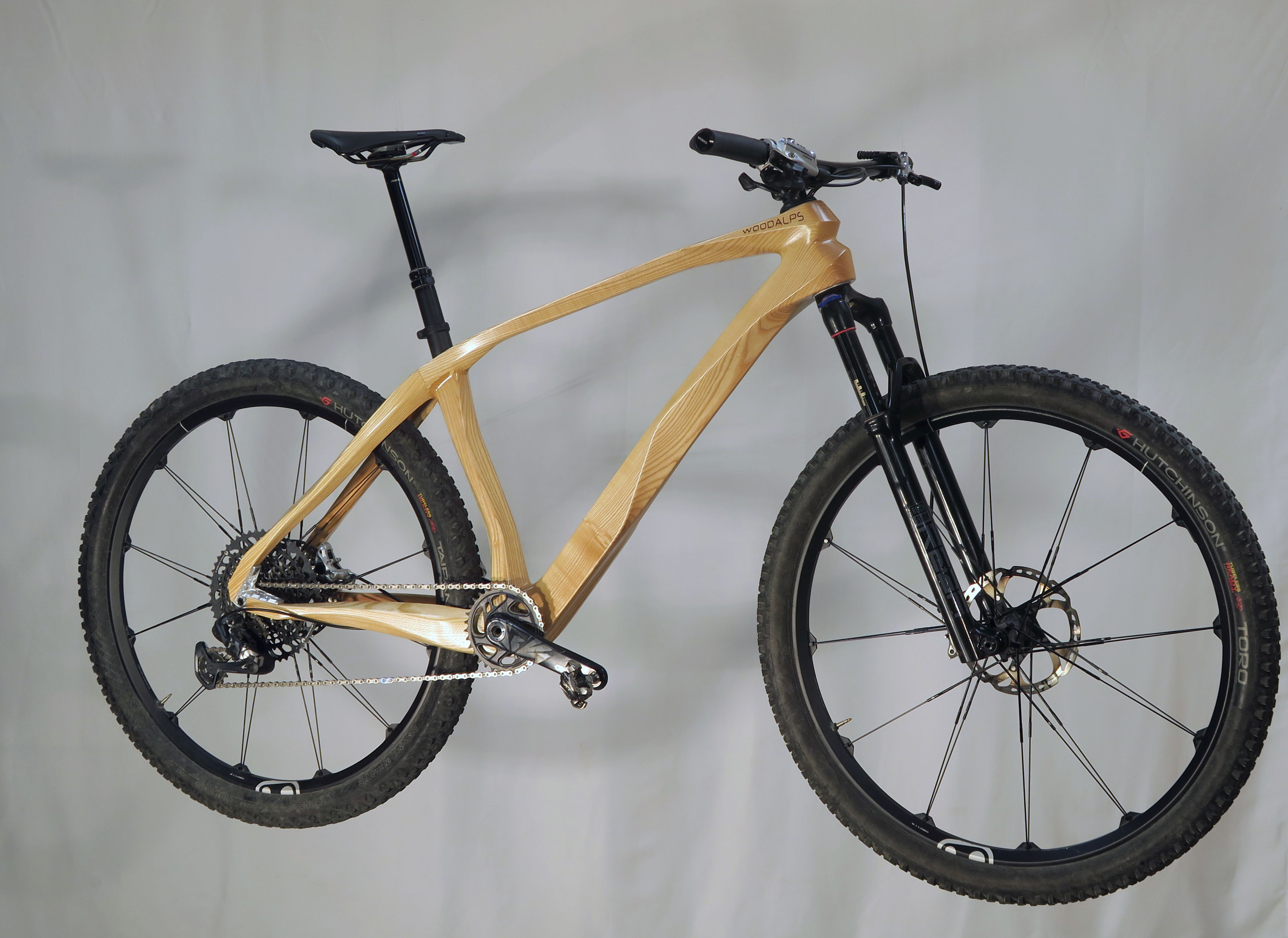
Arnaud is based in Lugrin, near Evian in the French Alps, and has been building bikes for himself for 11 years. 2023 is the first year he’s start selling his bikes, which are made mainly from ash wood ‘one of the strongest local wood in Europe and has a nice wood grain.‘
‘The wood as approximately the same stiffness to weight ratio than aluminium. It is less stiff, but has a lower density, so if we put 4-5 time more material than on an aluminium frame, the behaviour is quite similar in terms of stiffness. Having more material also allows to have larger sections with an incresased inertia (bending stiffness), and to do some design.
Latest Singletrack Merch
Buying and wearing our sustainable merch is another great way to support Singletrack
The work starts by the selection of the wood logs and the planks from which will be cut the different parts of the frame. Each frame is in fact made up of around 10 pieces of wood, with some carbon inserts and aluminium machined parts for the junctions with the headset, the crankset, the seatpost, and the rear wheel.
All parts are glued with epoxy glue. The two half-shells (yes, the frame is hollow), perfectly symmetrical right down to the wood grain, are machined using a numerically controlled machine with a precision of a tenth of a millimetre before being glued together, sanded, then varnished.
The high-end varnish reduces its sensitivity to humidity variations to zero, and provides exceptional resistance to the worst environments encountered during mountain biking.
The use of wood allows a great liberty in the design of the frame. I like to create organic shapes and to make something different that we are used to seeing. The wood it the perfect material for this.‘
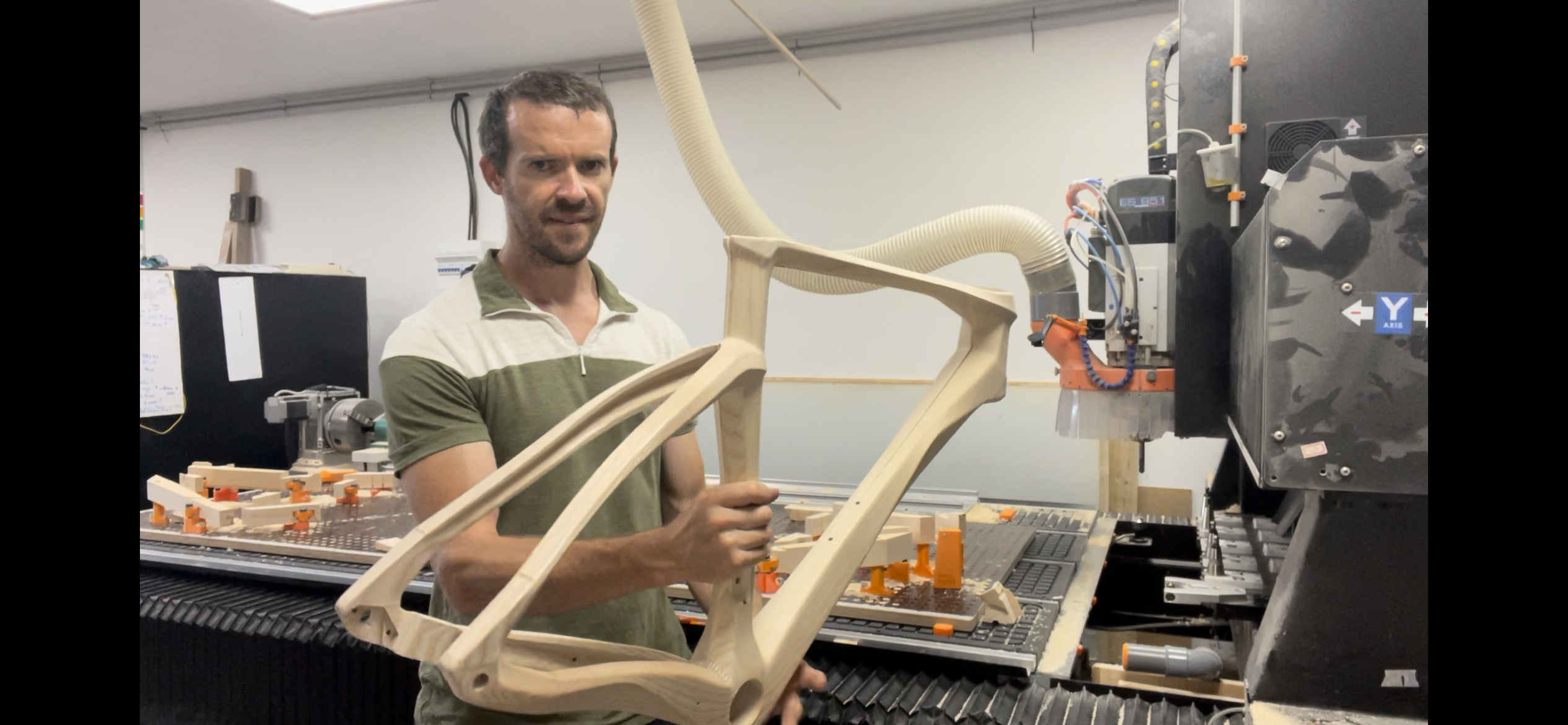
Favourite part about the build process?:
‘My favourite part is the design of the bike. I like to create things. But this represents a small part of the activity, as the setup of the manufacturing process is quite long. In my day job, I’m engineer in aerospace industry, I design satellite structures. But satellite structures are only flat sandwich panels assembled together (ok, not usually so simple, but still too flat for me…), so I need to make something a bit more fun, so I create some bikes!‘
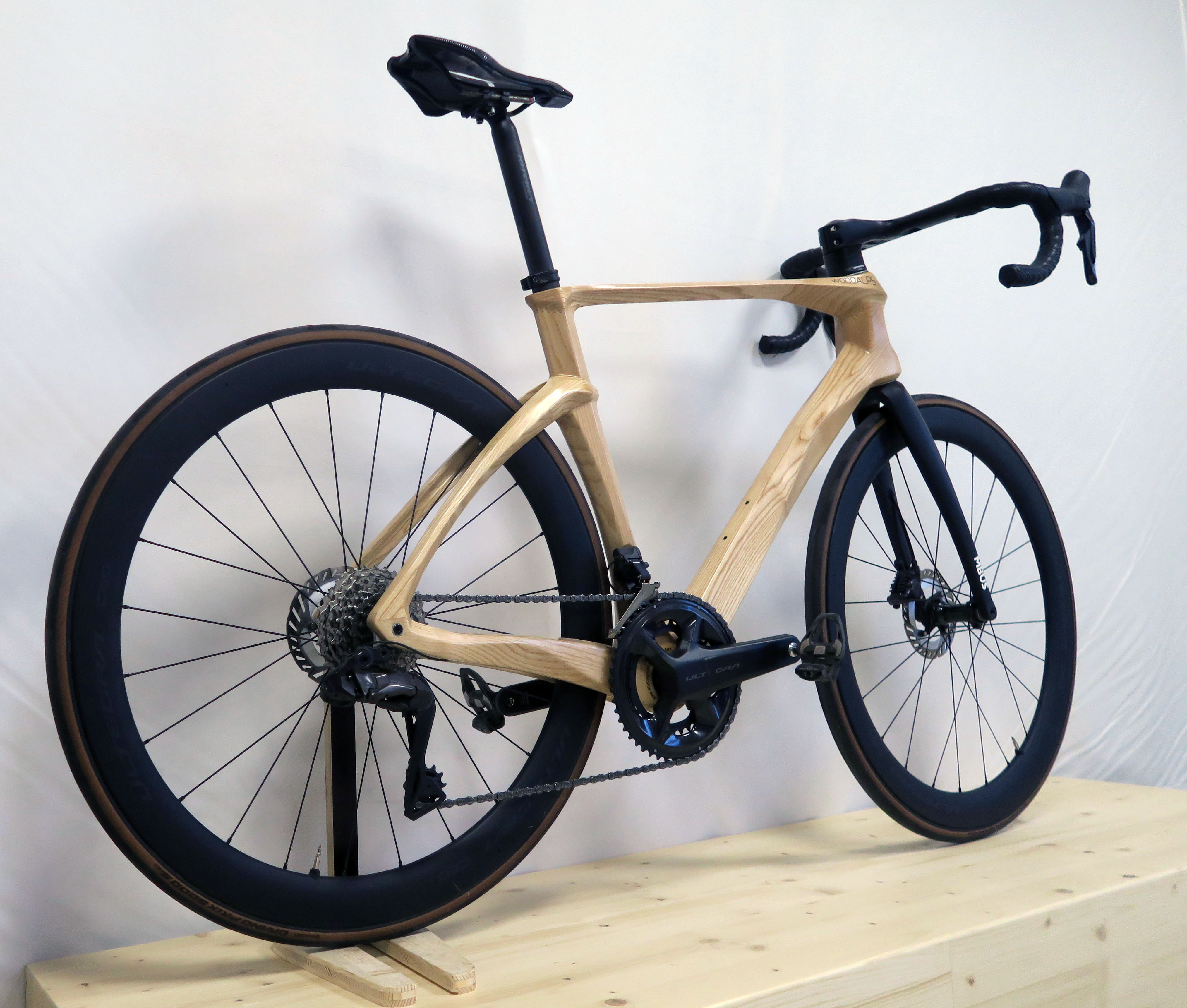
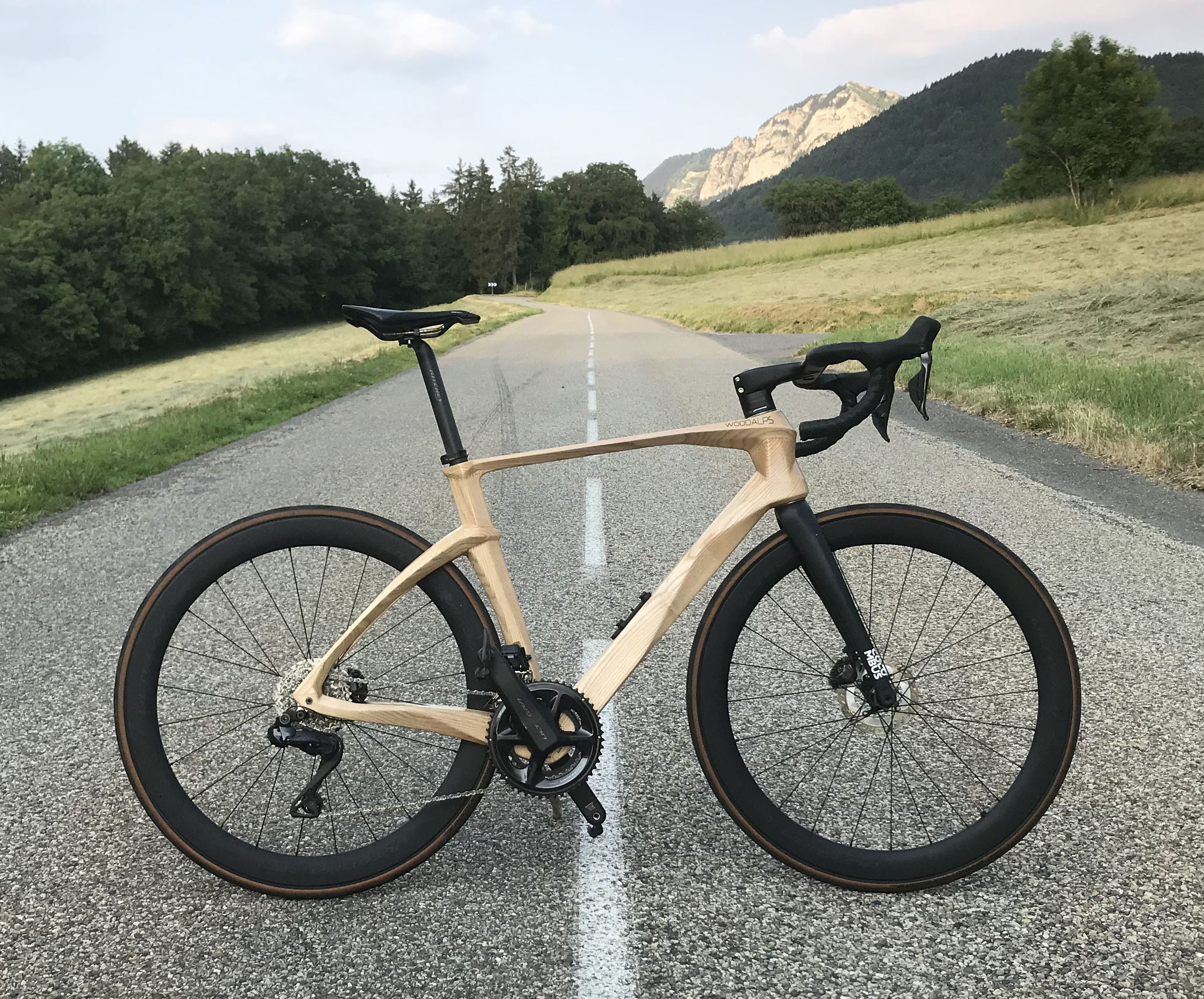
As well as the YGGY mountain bike, Arnaud makes a GROOTY road bike:
‘It is stiff, reactive. The particularity compared to standard carbon, titanium and aluminium bikes is the comfort. Most tester feel the additional comfort coming from the use of wood, which dampens the vibrations.‘
Most challenging part of the build?:
The most challenging part of the build is the design. Some small details can change a lot the final rendering, so I take a lot of time to modify the shape, try new curves, and adjust the existing ones,
The definition of the junctions between the different pieces of wood is also important. The wood is resistant, but mainly in the longitudinal direction of the fibers, I need to be careful to have the loads oriented only in the fiber direction.
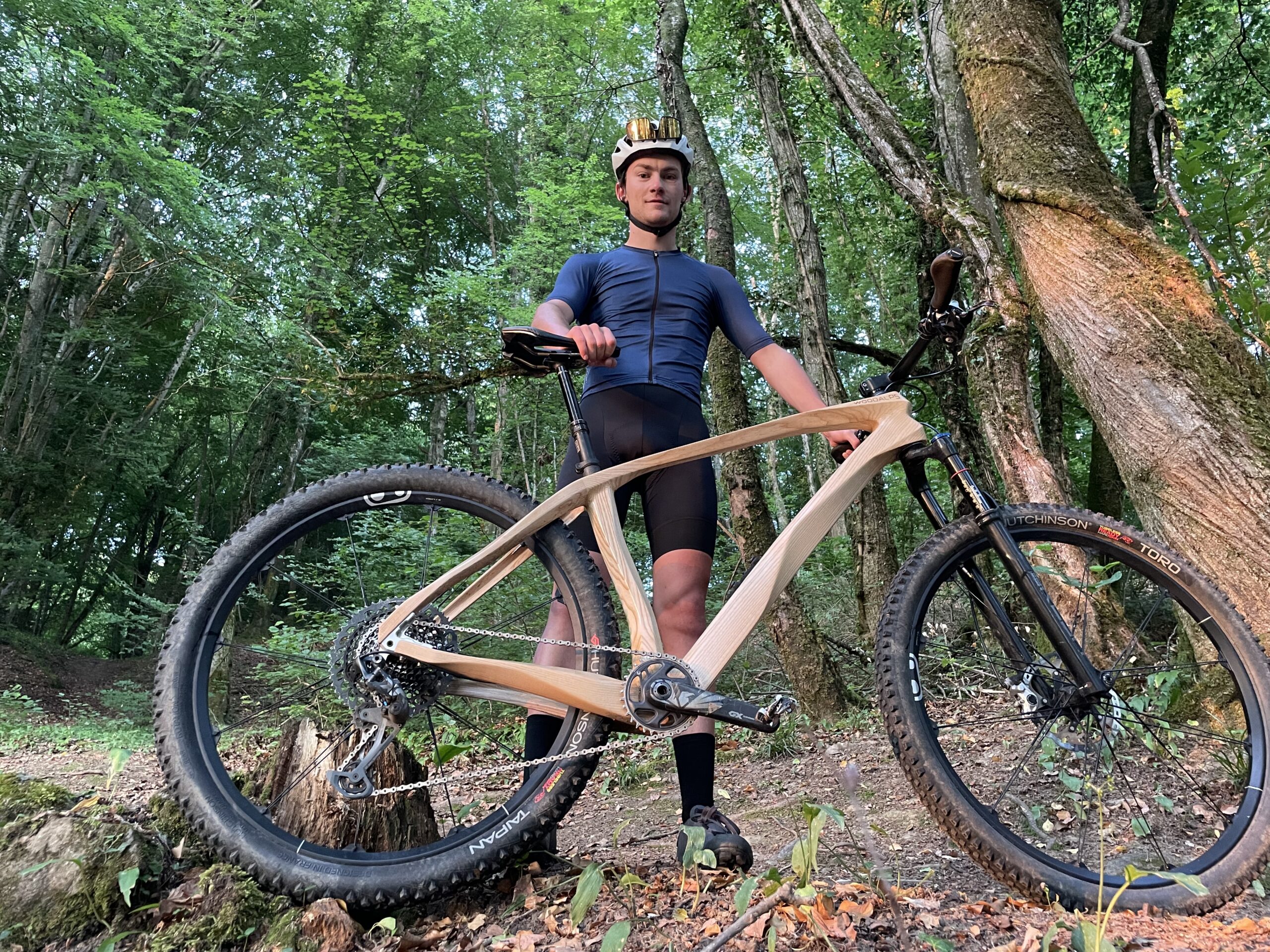
Any lessons learnt or things you’d do differently next time?:
I’m quite pleased with the result and I do not see major improvements on my bikes. My major project is to create new models, but it takes a lot of time, so one should not be in a hurry. But i’m in a hurry to create new models, because I like it… I need to sell more bikes to train someone else on the manufacturing activity, and to focus on the new models.
While you’re here…
Resort guides
Where will you ride next?→
